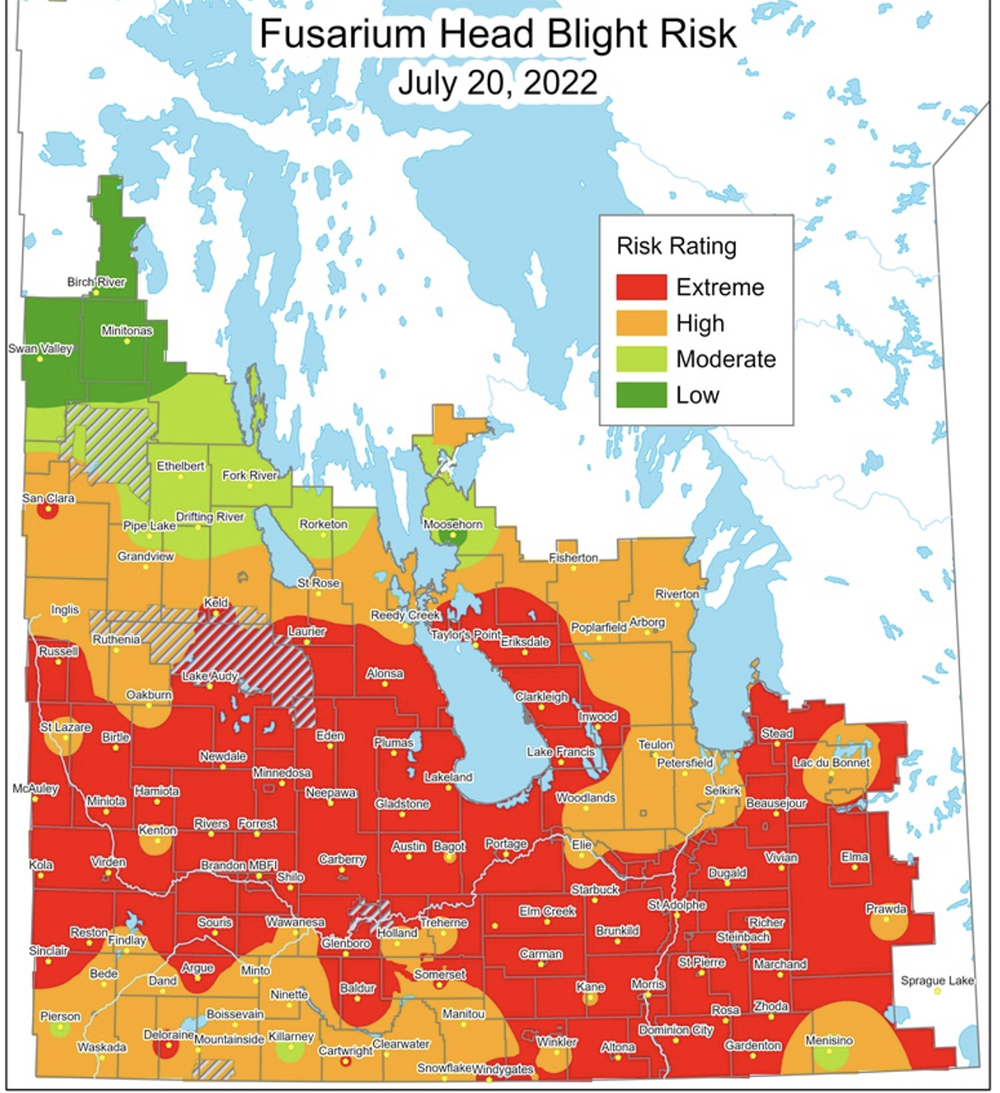Fusarium head blight is making a return to areas of the Prairies where heavy early-summer rains soaked fields.
“Conditions across much of Manitoba have been really favourable for FHB infection,” said Ashley Ammeter, Manitoba Crop Alliance agronomist.
Hot and wet conditions are “exactly what we don’t want to see,” she said. “The other unfortunate part of this equation is that many of our spring wheat and barley crops are just beginning head emergence, so the later season crops are flowering or have flowered.”
That timing has led to a situation in which FHB risks come when cereal crops are especially prone for the disease to spread.
Read Also

Manitoba community projects get support from HyLife
HyLife Fun Days 2025 donated $35,000 each to recreation and housing projects in Killarney, Steinach and Neepawa earlier this fall.
Manitoba’s FHB risk map for the beginning of July has seen much of the province’s cultivated areas under a high to extreme risk.
“Even though some of our varieties have some resistance to fusarium head blight, we don’t have any varieties that are completely resistant,” said Ammeter.
Precipitation, high humidity and optimal temperatures in the mid-20s C have all been present in Manitoba during the fungus’s prime month of July.
For wheat, symptoms include brownish spots near the base of glumes beginning in July. Barley symptoms begin as dark colourations.
Persistent humidity can cause white or orange masses of spores to form over infected heads.
The dry weather during the past few years has given producers a respite.
“Having said that, this is an issue that Manitoba farmers are well experienced with. It’s been a big issue for many years,” said Ammeter.
Saskatchewan is also facing its own FHB problems. Areas in the southeast are experiencing similar conditions as Manitoba.
Sara Tetland, provincial specialist for cereal crops, said Saskatchewan is experiencing the double-edged sword of weather conditions with precipitation and warm weather ideal for crop development but also good for FHB.
“The wheat and durum crops are getting to that heading stage throughout most of the province, which is when farmers will want to assess their risk for fusarium head blight,” said Tetland, adding that some have begun spraying for the disease. “We’ve got quite a few calls from farmers trying to assess their risk now.”
While conditions are variable across the province, Tetland said the western portion faces less severe risks.
Rain-splash and wind can help spread the disease with Tetland pointing out that crop rotation will also figure into the risk equation if cereals have been planted in consecutive seasons.
FHB conditions in Alberta are generally low with some exceptions in the Peace region, along the Athabasca River and near Red Deer, where favourable FHB conditions exist.
Areas historically prone to FHB development in southern Alberta are reporting low risk as of mid- July.
















